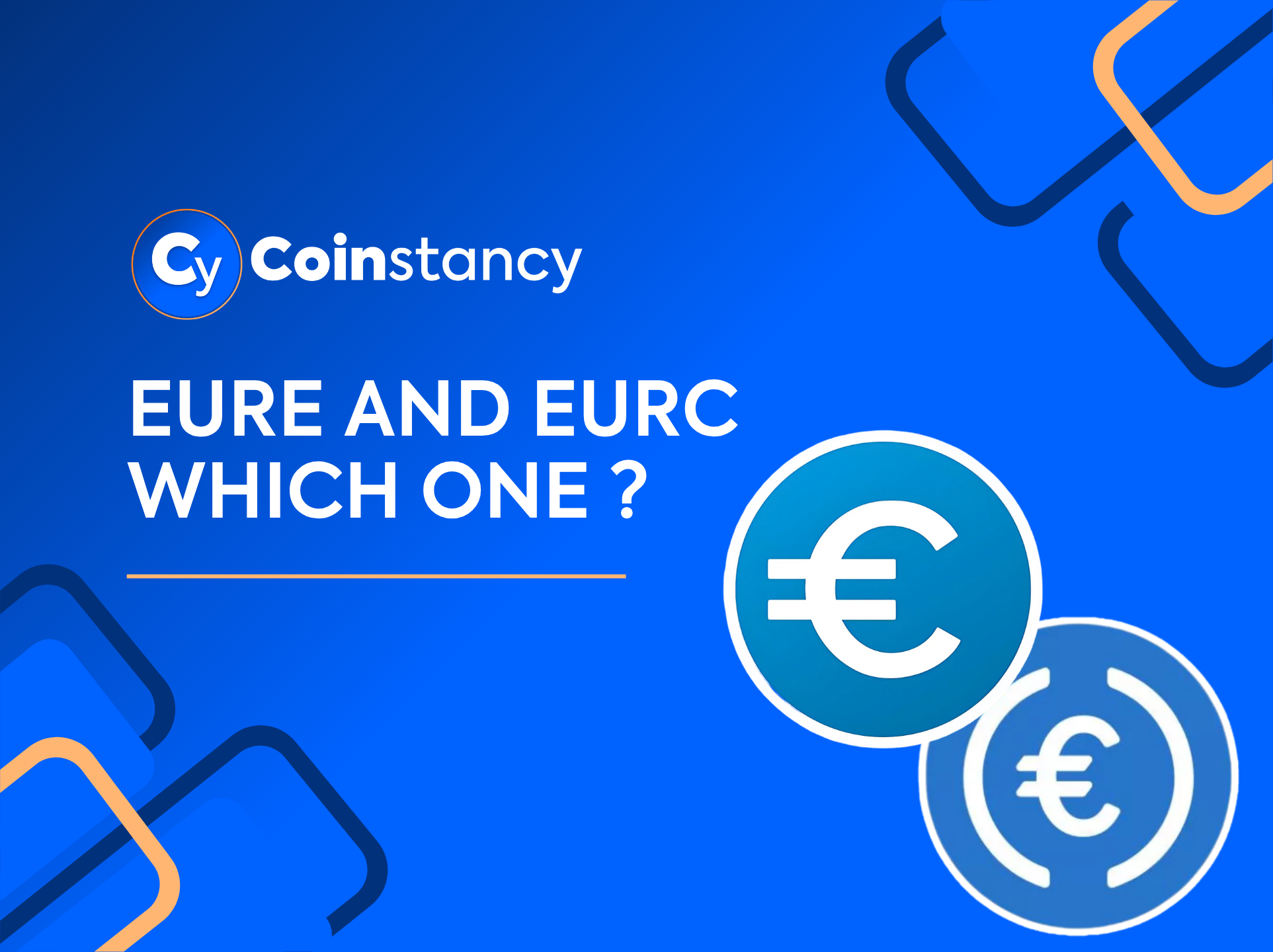
EURe vs EURC: which euro stablecoin should you choose?
EURE vs EURC: which euro stablecoin should you choose? 💰
Euro stablecoins are on the rise, and two tokens stand out: EURE by Monerium and EURC by Circle as the euro version of USDC. If you want to hold your funds in digital euros, understanding their differences is crucial to make the right choice.
Get the best returns on Coinstancy.
Sign up for free in just a few clicks.
👉 Considering an euro stablecoin? Coinstancy guides you to maximize your yields with ease!
What is an euro stablecoin? 🧐
An euro stablecoin is a digital token pegged 1:1 to the euro. It reduces crypto volatility by keeping value steady on the blockchain, while offering:
- Protection from crypto market swings
- On-chain euro payments
- Smooth transitions between crypto and fiat
Introducing Eure (Monerium) 🔗
Issuer: Monerium, an Icelandic startup licensed as an Electronic Money Institution (EMI) in the EEA.
Networks: Ethereum, Gnosis, Avalanche, and other EVM-compatible chains.
Backing: Each EURE is backed by one euro held in regulated bank accounts.
Transparency: Regular audit reports from Monerium.
Fees: Low (around 0.1%), network and volume dependent.
Use Cases: On-chain payments, fund transfers, DeFi integrations.
Pros of Eure:
- 🏦 EMI license ensuring regulatory oversight
- 🔍 Frequent audits for full transparency
- 🚀 Multi-chain support for flexibility
Cons of Eure:
- 🌍 Limited listing on some platforms
- 📲 Monerium’s interface can be less user‑friendly
Introducing Eurc (Circle) 🌐
Issuer: Circle, co‑founder of USDC and major stablecoin player.
Networks: Ethereum, Solana, Algorand, Stellar, Tron…
Backing: Each EURC is backed by euros in safeguarded bank accounts.
Transparency: Monthly reserve attestations by Circle.
Fees: Free mint/burn via Circle, standard network gas fees.
Use Cases: Trading, payments, DeFi, free transfers within the USDC/EURC ecosystem.
Pros of Eurc:
- 🌍 Wide adoption through USDC network
- 🔄 Free on‑chain transfers between compatible addresses
- 💼 Strong industry backing
Cons of Eurc:
- 📝 Attestations instead of full audits
- ⚖️ No specific EMI license for euro
Security and regulation ⚖️
- Eure (Monerium) holds an EMI license, complying with Basel III standards and safeguarding client funds. Reserves are segregated and audited regularly.
- Eurc (Circle) operates under strict regulatory frameworks in the US and Europe, with monthly attestations to confirm 1:1 euro backing.
DeFi integration and ecosystem 🌱
- Eure is supported by DeFi protocols (e.g., liquidity pools on Gnosis) and expands through strategic partnerships.
- Eurc leverages the extensive USDC network, integrated into most DeFi platforms, exchanges, and wallets. You can swap EURC for USDC or use it directly in your favorite dApps.
Fees and performance 💸
- Eure: mint & burn fees ~0.1%, plus network gas fees.
- Eurc: free mint & burn via Circle, gas fees apply.
For frequent transfers, Eurc may be more cost-effective due to free mint/burn, while Eure remains competitive on low-gas chains.
How to choose between Eure and Eurc? 🎯
- Regulation focus: choose Eure if an EMI license matters.
- Network and DeFi: pick Eurc for the widest dApp compatibility.
- Fees and volumes: compare mint/burn and gas fees on your preferred chains.
- Transparency: Eure offers more detailed and frequent audits.
Conclusion: what’s next for euro stablecoins? 🚀
Eure and Eurc offer two complementary visions of digital euros: one prioritizes regulation and transparency, the other mass adoption and free services. Whichever you choose, both drive the growth of a stable, accessible euro on-chain.
Get the best returns on Coinstancy.
Sign up for free in just a few clicks.
🌟 With Coinstancy, access top euro stablecoins and fine‑tune your crypto strategies with confidence!